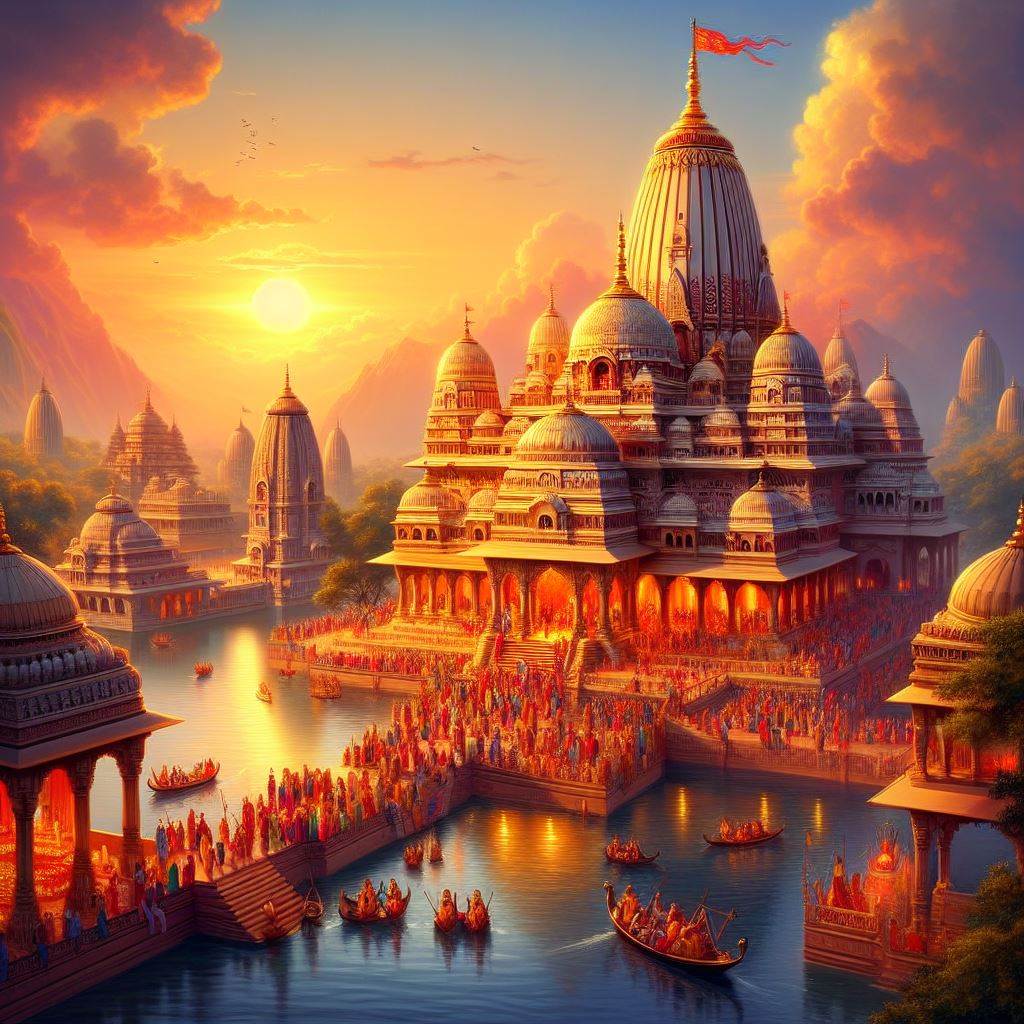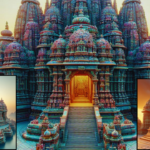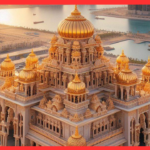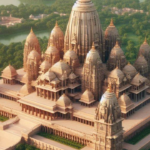Ayodhya Temple:
Today after 500 years of penance we are going to get a grand Ram temple in Shri Ram Janmabhoomi Ayodhya. The path was very long and difficult politics also took place People’s rights were snatched away and also lost. But today India finally got the temple of Shri Ram Lala and Here is this grand temple of Ram Mandir Ayodhya in front of our eyes.
The logic and history behind it :
The main structure of this temple has neither steel nor cement and hence the question is how the stones were joined without bricks and cement. For this, technology has been used in this temple. The history of this temple is as old as Shri Ram but in the Mughal period, the Mughal ruler between 1528 and 29 Babar’s commander Mir Baqi destroyed the ancient temple.
Babri Masjid was built after which this event is discussed in multiple records such as Akbarnama written in 1598 and travel records of European travelers describing Ayodhya as an important pilgrimage site for Hindus and Joseph Tyff Thaler in 1766 and Francis in 1810. Bachananpet Val Records Ltd. Let us see that Babri Masjid was built by demolishing the temple and even in the British land records till 1940, this mosque has been referred to as Masjid Janmasthan.
Ayodhya Ram Mandir
After independence, in 1949, the idol of Ram Sitaaj was found here to maintain religious harmony. Nehru ordered the removal of the idol, but Ayodhya’s DM KK Nair didn’t comply. Locals then built a makeshift temple, leading to daily puja sanctioned by the District Courts in 1986. Hindus gained official status. In 1992, LK Advani’s Rath Yatra fueled demand for a temple, resulting in the Babri Masjid’s demolition and nationwide unrest. The Liberhan Commission investigated. ASI began an archaeological survey in 2003, concluding a Hindu temple existed beneath. Amidst debate, Marxist and Islamic historians criticized the ASI survey.
In 2005, terrorists attacked the makeshift temple, but CRPF swiftly neutralized them. The matter reached the Allahabad High Court in 2010, which divided the disputed land into three parts. This decision was appealed by the Supreme Court, which in 2019, awarded the entire land to the Ram Mandir Trust. And then begins the third largest temple in the world.

Shri Ram Janmabhoomi
Ram Janmabhoomi Teerth Kshetra Trust was formed on the orders of the Supreme Court and preparation for construction starts on this holy land in March 2020 the makeshift temple of Ram Lalla has been removed from here for some time and shifted here. There is some delay in this work due to Covid-19 They come but on 5th August 2020, the official Prime Minister of India Narendra Modi performs Bhoomi Pujan, after which the construction of the grand temple of our Shri Ram Lord starts in full swing and 2020, the famous architect whose family also works for Somnath and Akshardham Temple.
Chandrakant Sompura is famous this temple of Ram Lalla is designed keeping in mind the Vaastu and Shilpa Shastra. Our Shri Ram Lalla temple is built in the Nagar style of architecture of North India and its inspiration has been taken from Khajra of Madhya Pradesh. The temple and Konark Temple of Orissa temple are being constructed by the Indian company LND in which the great minds of IIT and NIT are also developed.
Shri Ram Grand Temple
Ayodhya is located in the middle Ganga plains on the city Ghagra River which is called Saryu here. is situated on its banks. In the region you get to see unconsolidated silt i.e. loose sand which can weaken the structures with time due to not being very far from the Himalayas, this region falls in Earthquake Zone Four and hence before building anything here, 14-meter excavation is required.
After doing this the soil was treated so that After the soil was stabilized, concrete was laid layer by layer which was further compacted with the help of a roller this RCC i.e. Roller Compacted Concrete is stronger than stone and has been set to last for thousands of years Ayodhya falls in Earthquake Zone Four but this temple can withstand the tremors of Earthquake Gen Five. A 6.4 meter, i.e. 21 feet slab of granite i.e. plinth has been placed on top of this concrete and this granite is sourced from Karnataka, Tamil Nadu, and Telangana.
This granite plinth has gone to this temple It will protect from any kind of dampness and termites and will provide more stability to the structure a grand temple of our Shri Ram has been built on this plinth, whose length is 360 feet and width is about 235 feet, in which there will be a total of three floors and each floor is approximately Total 70 acres will be 20 feet high This temple of Ramlala built on the land has been built by keeping it in a complex. Out of these 70 acres, the main temple has been built in only about 10 acres and the remaining area has been left as a green area which makes this temple more grand.
Ram Mandir Temple Wall
All around you will see this temple wall which is called Parkota. It is said that its total length will be 732 meters and width will be 14 feet and by entering from the Singh Gate on the eastern side of this rampart, you will climb 32 stairs on a 21 feet plinth. Lifts and ramps have also been constructed for the disabled and senior citizens. VIP is located on the north side of the normal entry.
By climbing the stairs from this main path of entry and lion gate, you will reach Rang Mandap where you will see pillars filled with carvings, next to that will be Nritya Mandap, and next to that, Kad Mandap where you will see 2100 kg bell made of Ashta metal and in front of Koon Mandap, You will see two more pavilions on either side In front of the Kirtan and Prayer Mandap and Kadu Mandap, you will get to see the Garbh Graha where our beloved Ram Lalla is seated.
This 4.25-foot statue of Ram Lalla installed here depicts the childhood of Ram Ji and it was built by Arun Yogiraj who is the architect of Nepal. 6 crore years brought from the banks of river Gandak This idol of Ram Lalla has been carved from the old Shaligram rock.
Architecture of Ram Mandir
This idol of Ram Lalla has been installed on an 8-foot-high throne made of gold-plated Makrana marble. The womb planet was designed on the day of Shukla Navami in the month of Chaitra, at noon. At 00:00 the sun’s rays illuminated the head of Lord Shri Ram. Above the sanctum sanctorum of Karengi and Ramlala, you will see a 161-meter-high curved pyramid-shaped spire built in Nagar architecture.
On top of this is this disc-shaped Kalash and above the Kalash, you will see a waving flag. Also, you will see the spire on top of the five pavilions. The grand temple and the fort have been built with pink sandstone brought from Rajasthan. Along with this, the 392 pillars of this temple are also made of sandstone. The floor of the temple is made of marble i.e. gold plated doors made of this complex i.e. teak. Indian culture in these doors and pillars from Allapalli and Ballarshah of Maharashtra.
The temples of Ji Bajrang Bali, Suryadev Shankar, Lord Annapurna Mata, and Maa Bhagwati. Using the Ash Technique these stones and pillars joined This technique gives us the idea of Khajra.






